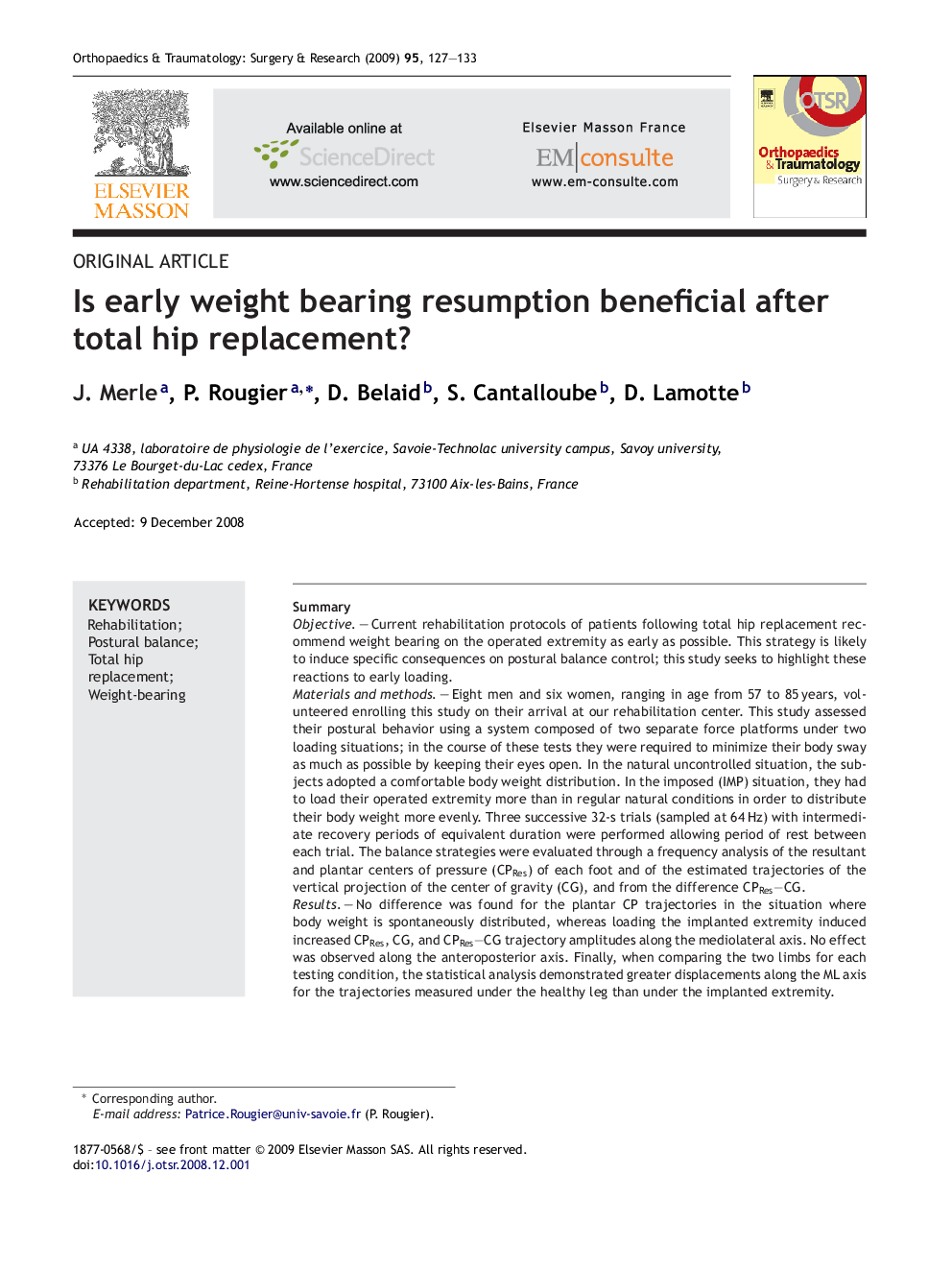| کد مقاله | کد نشریه | سال انتشار | مقاله انگلیسی | نسخه تمام متن |
|---|---|---|---|---|
| 4082530 | 1267643 | 2009 | 7 صفحه PDF | دانلود رایگان |

SummaryObjectiveCurrent rehabilitation protocols of patients following total hip replacement recommend weight bearing on the operated extremity as early as possible. This strategy is likely to induce specific consequences on postural balance control; this study seeks to highlight these reactions to early loading.Materials and methodsEight men and six women, ranging in age from 57 to 85 years, volunteered enrolling this study on their arrival at our rehabilitation center. This study assessed their postural behavior using a system composed of two separate force platforms under two loading situations; in the course of these tests they were required to minimize their body sway as much as possible by keeping their eyes open. In the natural uncontrolled situation, the subjects adopted a comfortable body weight distribution. In the imposed (IMP) situation, they had to load their operated extremity more than in regular natural conditions in order to distribute their body weight more evenly. Three successive 32-s trials (sampled at 64 Hz) with intermediate recovery periods of equivalent duration were performed allowing period of rest between each trial. The balance strategies were evaluated through a frequency analysis of the resultant and plantar centers of pressure (CPRes) of each foot and of the estimated trajectories of the vertical projection of the center of gravity (CG), and from the difference CPRes–CG.ResultsNo difference was found for the plantar CP trajectories in the situation where body weight is spontaneously distributed, whereas loading the implanted extremity induced increased CPRes, CG, and CPRes–CG trajectory amplitudes along the mediolateral axis. No effect was observed along the anteroposterior axis. Finally, when comparing the two limbs for each testing condition, the statistical analysis demonstrated greater displacements along the ML axis for the trajectories measured under the healthy leg than under the implanted extremity.DiscussionLoading the operated extremity early in the rehabilitation process leads to less stability (an increase in the CG movements) and to increased energy expenditure (an increase in the CPRes–CG movements). These postural behavior alterations can be explained by various factors including a loss of muscle strength, residual apprehension due to the disuse of this limb, and persistent pain, all of which are increased by limb loading. These features should be taken into consideration when elaborating the rehabilitation protocol for these patients.Level of evidence: Level III. Decision analyses study.
Journal: Orthopaedics & Traumatology: Surgery & Research - Volume 95, Issue 2, April 2009, Pages 127–133